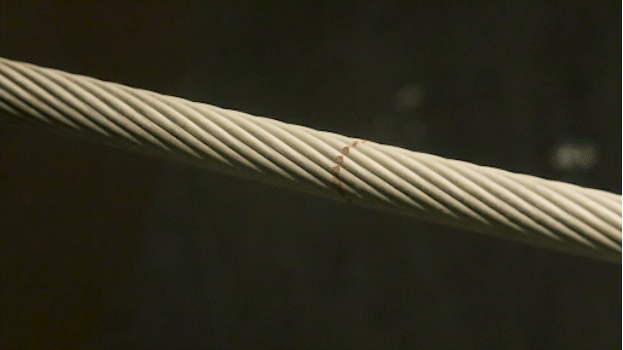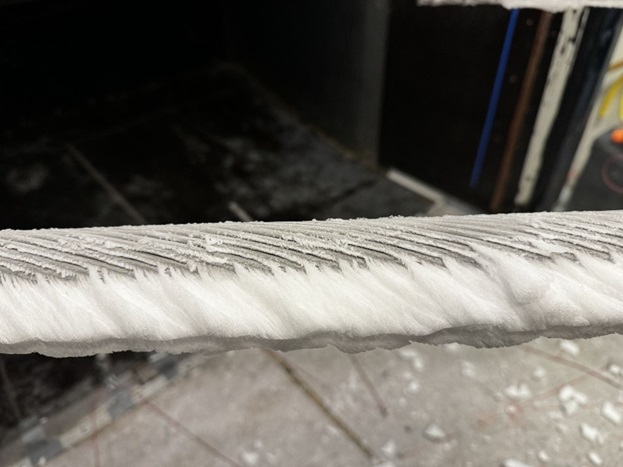Climatic wind tunnel testing: Safeguard power lines from icing risks
Niemann ENGINEERS aids Amprion in addressing ice's impact on overhead power lines. Our solution: advice on crucial tests & collaboration in a climatic wind tunnel, ensuring insights for future design.
Ice accretion on overhead power lines can be very expensive
Thousands of kilometres of power lines form the backbone of societal infrastructure, crucial for powering homes, industries and essential services. Replacing them is costly. The wind engineering consultancy Niemann ENGINEERS was asked to investigate how the German transmission operator Amprion could protect power lines against icing that breaks or reduces their function before replacing a large part of the network with newer conductors and towers.
Climatic wind tunnel: Anticipate weather phenomena on physical infrastructure
"Niemann ENGINEERS wanted to find out how much additional load power line conductors can experience when exposed to atmospheric icing. Our climatic wind tunnel allows us to study this and assess which measures are necessary to ensure safer power lines," FORCE Technology Hydro & Aerodynamics project engineer Lubomir Matejicka says.
Pre-test advice crucial to reduce extent and need for full-scale testing
"The pre-test joint analysis is essential in this type of project, as climatic tests need to be performed at full scale. This means that an accurate test plan and scope is pivotal to reducing project costs and the number of testing days as we can be precise once we get into the climatic wind tunnel," FORCE Technology Hydro & Aerodynamics Senior Team Leader Søren Vestergaard Larsen says.
"Together, we drafted a test plan tailored to Amprion's needs and tested the effects of different weather conditions on ice and aerodynamic loads, as well as the effect of conductor heating on ice accretion. Both Niemann ENGINEERS and Amprion took part in the testing onsite."
Climatic wind tunnel test specifics:
- The description of the ice accretion process with respect to mass buildup over time
- The change of drag and lift coefficient during the accretion process over time
- The effect of conductor axial rotation during the accretion on mass buildup and aerodynamic load coefficients
- The effect of conductor heating on the ice accretion process and aerodynamic loading

Facility availability, staff and price made all the difference
"We decided to carry out the icing tests at FORCE Technology primarily because of the specific expertise of the engineers in charge and their willingness to be as flexible as possible for a research project in terms of the experiments to be carried out and the knowledge transfer to be expected. The availability of the facility, maintained by an experienced staff, and all this at a reasonable price, made all the difference," Dr. Norbert Hölscher at Niemann ENGINEERS says and continues:
"Working with the FORCE Technology engineers has been very inspiring and has given us an excellent insight into the physics of icing. In a very communicative way, they showed us how to carry out the experiments in the climatic wind tunnel and scientifically analyse the experimental results."
Insights can inform the future design and maintenance of power lines
"Amprion intends to improve the current design procedures for overhead power lines with regard to atmospheric icing. This includes in-cloud icing as well as precipitation icing in the form of wet snow or freezing rain. The experiments will be continued in order to obtain a conclusive understanding of these different processes. Furthermore, the results of the climatic wind tunnel tests will be evaluated in light of long-term in-situ data observed on various power lines. All these observations shall be introduced in an appropriate engineering concept which relies on a sophisticated physical basis for a probabilistic reliability analysis," Erick Ulloa Jimenez at Amprion says.
Get in touch to find out more about the climatic wind tunnel
Get in touch to find out how the climatic wind tunnel can help you assess and mitigate the effect of rain, ice and snow on your critical infrastructure.





